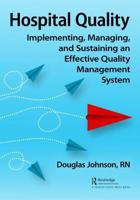Publisher's Synopsis
Portraits of Labor Market Exclusion presents 'profiles' or 'portraits' of individuals who have limited labor-market attachment. It is widely accepted that those with limited attachment to the labor market are a highly heterogeneous group (including, for instance, recent job losers, long-term unemployed, school leavers with no labor-market experience, those close to retirement age, or people with caring responsibilities), and that understanding their circumstances and potential barriers is an essential prerequisite for designing and implementing a tailored and effective mix of policy support and incentives. The report takes a comprehensive view, focusing on both the labor market attachment of a country's out-of-work population and the social assistance package and poverty profile of the same segment of the population. In essence, the report looks at individuals through the lenses of both poverty/welfare status and labor market indicators, and, in doing so, the portraits helps move the dialogue from a purely labor market-centric view to a broader dialogue that includes social policy as a whole. This is an important shift; for instance, social protection programs, such as family benefits and maternity benefits, and broader social policy issues such as retirement ages, often have a great impact on who remains inactive. Specifically, the report presents portraits of the out-of-work population of six countries (Bulgaria, Estonia, Greece, Hungary, Lithuania and Romania) in terms of distance from the labor market, human capital, and labor supply conditions, as well as demographic conditions. The analysis relies on the European Union Statistics of Income and Living Conditions (EU-SILC) surveys for the years 2007 to 2011. Latent class analysis methodology allows multidimensional profiling of the out-of-work population, and identifies classes or groups of out-of-work individuals that are as homogeneous as possible within each class according to a set of observable characteristics, and as distant as possible between classes. Consequently, this analysis provides a much richer glimpse of the very different barriers to labor market integration that these various groups experience, considerably augmenting the limited amount of information contained in traditional descriptive statistics.










